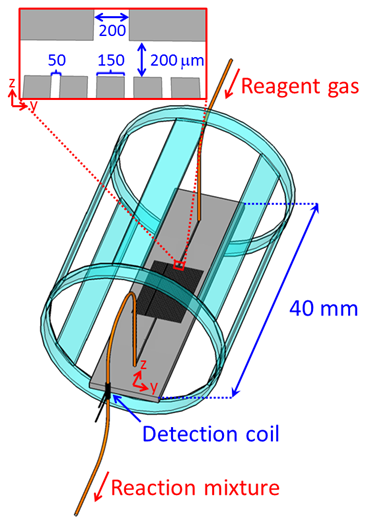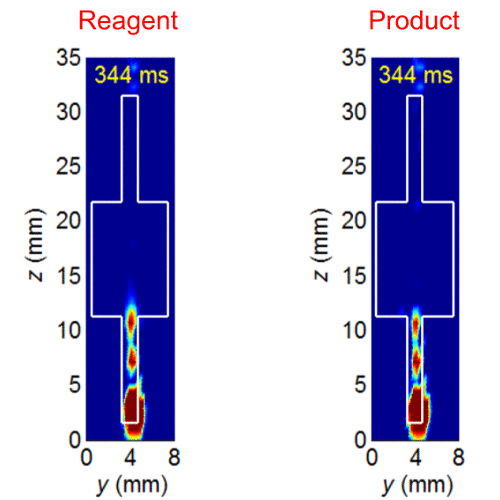


Remote detection NMR is a technique introduced in the Pines lab in UC Berkeley. In the method, the spatial or chemical information about the sample is encoded into the spin coherences of fluid molecules flowing through the sample by a large coil around the sample. Signal is detected by another, much smaller and more sensitive coil outside the sample. The remote detection may increase the experimental sensitivity by several orders of magnitude. It provides also time-of-flight information, which is very useful in flow imaging.
We develop remote detection NMR based methods for imaging chemical reactions and gas adsorption in microfluidic devices and packed-beds. The combination of remote detection NMR and parahydrogen-induced polarization (PHIP) may increase the experimental sensitivity up to five orders of magnitude, enabling the visualization of gas phase reactions despite of the low density of molecules in gases and small dimensions of microfluidic channels.

